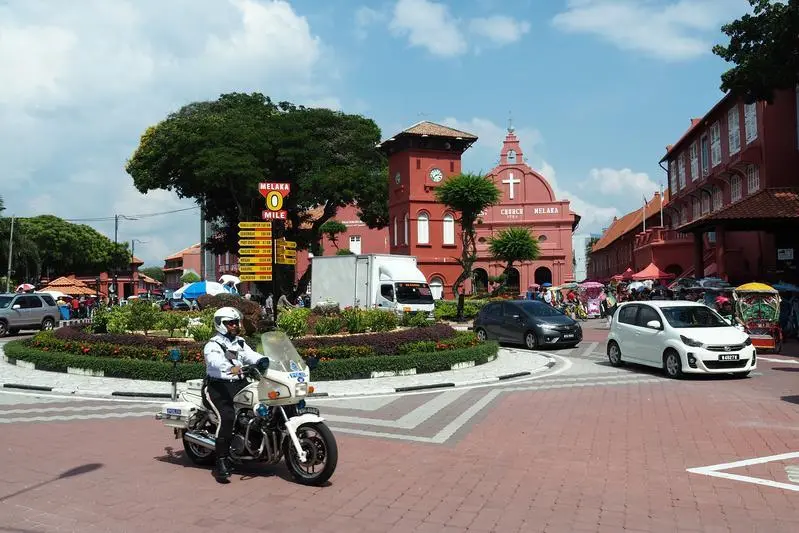PHOTO
DUBAI - Malaysia is banking on airline partnerships, a new premium integrated resort and targeted halal and Arabic-language tourist handbooks to reverse the drop in Middle East visitor arrivals.
The tourism ministry’s goal to attract 1 million visitors from the Middle East by 2020 hit a speed bump last year.
Musa Yusof, senior director of the ministry of tourism’s Malaysia Tourism Promotion Board, attributed the decline to reduced advertising activity in international markets.
“We are going to relaunch. We have been silent in the market for several years so we’re coming in again,” Yusof told Salaam Gateway on Sunday.
“In 2017 there was a bit of a drop [of visitors from the Middle East], from around 287,000 in 2016 to 251,937, a drop of 12.3 percent,” said Yusof.
The drop in visitors from the Middle East was sharper than Malaysia’s overall dip in tourists in 2017, which was down three percent to 25.9 million.
The reduced advertising activity followed the two tragic events in 2014 that hit national carrier Malaysia Airlines.
“In 2014 because of Malaysia Airlines 370 and MH17 we reduced our ‘noise’ in the market. We were advised by our advertising agency to hold on. So we slowed down, but now we’re back,” said Yusof.
Malaysia Airlines Flight 370 disappeared on March 8 in 2014 with 239 flying from Kuala Lumpur to Beijing and all 298 on board Flight 17 were killed on July 17 when the plane was shot down over eastern Ukraine en route from Amsterdam to Kuala Lumpur.
Yusof also cited competition as a factor for fewer Middle East visitors to Malaysia.
“Now there are competitors coming in, like Indonesia, Thailand and even Cambodia,” said Yusof.
However, statistics show the Southeast Asian neighbours all saw a drop in visitors from the Middle East last year, pointing instead to possible outbound factors.
Thailand, a bigger international tourist attraction than Malaysia welcomed 35 million visitors in 2017, but saw arrivals from the Middle East down 7.9 percent to 68,012 as at September last year, according to data from the ministry of tourism.
Indonesia suffered a 7.73 percent drop in Middle East arrivals, to 222,362 for the whole of 2017, according to figures from the ministry of tourism. 12.02 million visitors travelled to Indonesia in 2017.
‘RELAUNCH’ PLANS
According to Yusof, Malaysia will collaborate with Middle Eastern airlines including Emirates, Etihad Airways and Iran’s private carrier, Mahan Air to boost arrivals from the region.
The tourism authority has also started a joint promotional campaign with UAE-based Dnata Travel to push family-friendly destinations in Malaysia, especially for the summer season.
It is heavily publicising Desaru Coast, a new premium integrated resort that will open to the public in July after Ramadan and Eid.
“From our studies, we’ve found that people don’t travel very much during Ramadan. We’re looking at after Ramadan,” Yusof said.
The 3,900-acre Desaru Coast lies along 17 kilometres of beaches fronting the South China Sea and includes five-star hotels and luxury resorts, a conference centre, a golf course, and a themed water park.
Developed over five years by Desaru Development Holdings at a cost of around $1 billion, Yusof said the attraction was designed to provide “a new product”, particularly for repeat visitors to Malaysia.
Desaru Development Holdings is a subsidiary of Themed Attractions Resorts and Hotels (TAR&H), a unit of sovereign wealth fund Khazanah Nasional Bhd. TAR&H is also responsible for other integrated theme parks in Malaysia including Legoland and Sanrio Hello Kitty Town.
Other efforts to draw Middle Eastern visitors include a Muslim halal travel guide for the northern state of Penang and an Arabic tourist handbook for the state of Selangor that encircles the capital Kuala Lumpur.
(Reporting by Emmy Abdul Alim; Editing by Seban Scaria seban.scaria@thomsonreuters.com)
Our Standards: The Thomson Reuters Trust Principles
© Salaam Gateway 2018












